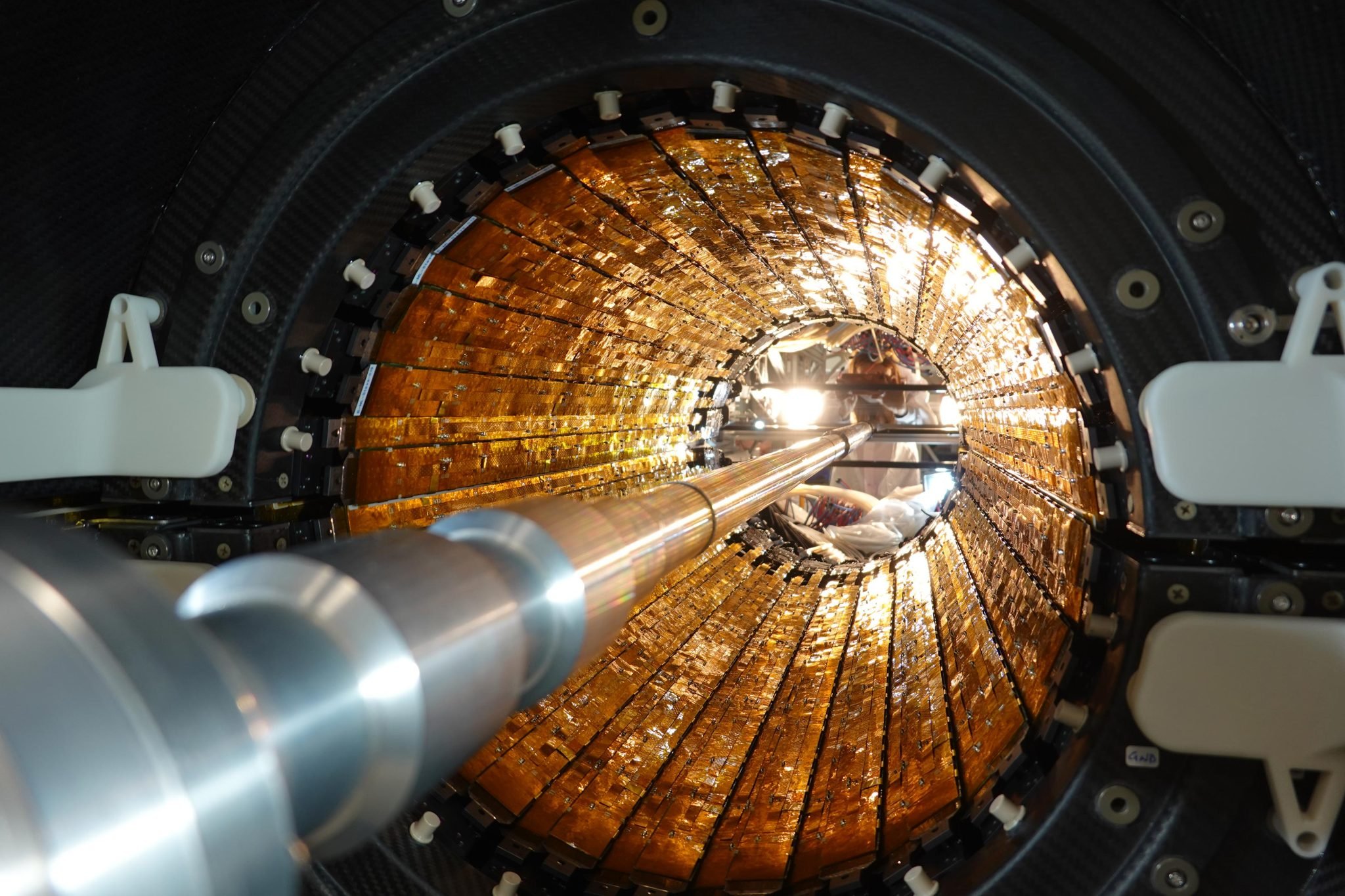Desenredar correlaciones de picos en colisiones simples
3 min read
ALICE ITS Instalación del cañón exterior. Crédito: CERN
La observación acerca a los físicos al descubrimiento del origen de los fenómenos colectivos en pequeños sistemas de colisión.
En un descubrimiento importante, la colaboración ALICE observó una correlación máxima en el sistema de colisión más simple, proporcionando información sobre el quark-gluon.[{” attribute=””>plasma-like collective phenomena in small systems. This research will aid in identifying the mechanisms governing collective behavior.
When atomic nuclei such as gold or lead nuclei collide at high energy in particle colliders, they can produce quark–gluon plasma (QGP) – a hot and dense state of matter predicted to have existed shortly after the Big Bang. One of the key features of QGP formation in such heavy-ion collisions is a long-range spatial correspondence, or correlation, between the particles that are created in the collisions. This collective phenomenon, which manifests as a ridge-like shape in data plots and is known as the ridge, was first observed in 2005 in heavy-ion collisions at the Relativistic Heavy-Ion Collider at Brookhaven National Laboratory in the US, and has since been observed at CERN’s Large Hadron Collider (LHC) in smaller collision systems such as collisions between protons.

Closing the Doors of the ALICE Magnet. Credit: CERN
At the Rencontres de Moriond conference on March 31, the ALICE collaboration reported the observation of a ridge correlation in the simplest collision system yet. The result brings physicists a step closer to finding the origin of QGP-like collective phenomena in small collision systems.
The first observation of a ridge correlation in collisions other than heavy-ion collisions was made in 2010 by the CMS collaboration in “high-multiplicity” proton collisions that produce a relatively large number of particles. Soon after, CMS, ALICE and ATLAS observed the phenomenon also in collisions between protons and lead nuclei. These observations came as a surprise – such collision systems were expected to be too small and simple to develop QGP-like collective behaviour. Further studies have shown that the observed ridge correlations are indeed collective in nature, but the exact mechanisms that underpin this collective behaviour in these smaller and simpler systems remain to be identified.

Number of particle pairs (vertical axis) along two angular directions. A ridge-like shape is seen on the nearside on both sides of the peak. Credit: ALICE collaboration
In its latest study, the ALICE collaboration set out to investigate whether a ridge correlation also occurs in “low-multiplicity” proton collisions that create a relatively small number of particles. The ALICE researchers analyzed a large sample of proton collisions recorded by the collaboration during the second run of the LHC to investigate how the ridge effect depends on the number of particles produced in the collisions. They then plotted in a graph the number of particle pairs produced in a set of low-multiplicity collisions along two angular directions relative to the collision axis, and found a clear ridge-like shape.
Next, the ALICE team examined how the number of particle pairs associated with the ridge varied with multiplicity, and compared the results with previous results from electron–positron collisions recorded by the ALEPH experiment at the Large Electron–Positron Collider, the LHC’s predecessor. This comparison showed that, for the same multiplicity, the ridge correlation in proton collisions is stronger than that deduced for electron–positron collisions, in which no ridge correlation has so far been seen.
These new ALICE results, as well as future studies based on data from the third run of the LHC, should help physicists identify the mechanisms that govern collective behavior in small collision systems.

“Increíble aficionado a la música. Estudiante. Empollón empedernido del café. Jugador. Especialista web aficionado. Pionero malvado de la cultura pop”.


